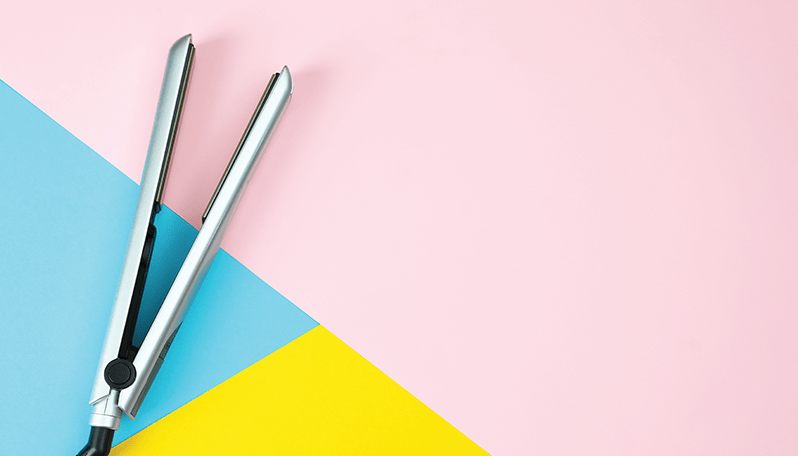| Types |
Flat Iron
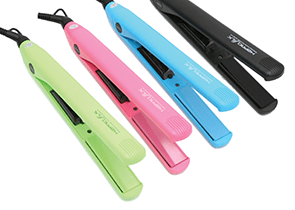
H2pro Silk Color Flat Iron |
Hot Comb (Straightening Comb)
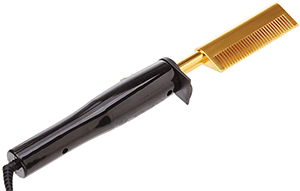
Conair Hair Straightening Hot Comb |
Stove Iron
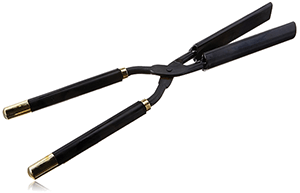
Gold ‘N Hot Professional Stove Flat Iron |
| Temperature Range |
0-400°F |
0-149°F |
0-460°F |
| Price Range |
$14.68-$299.99 (by Amazon) |
$7.90-$26.99 (by Amazon) |
$7.00-$524.00 (by Amazon) |
| Pros |
Free from burns.
Easy to use.
Mild damages to hair.
It can reach fairly high temperatures. |
Affordable.
It can be used to straighten hair from the root. |
It can maintain a high temperature around 460°F in a stove, suitable for African Americans with thick hair.
Hard to control temperature. |
| Cons |
Depending on features, it can be pricey.
Occasional burns. |
Prone to burns.
Severe damages to hair. |
Not suitable for home use; a salon equipment. |
- Characteristics Depending on Materials
Ceramic flat irons: ceramic distributes heat evenly, so they reduce hair damages. Recommended for frizzy and thin hair. Reasonable price.
Titanium flat irons: titanium rises to working temperature quickly and boasts the strongest and quickest heating among all flat irons. You must watch out for hair damage if you have thin hair. Suitable for customers with thick hair; preferred by many salons.
Tourmaline-coated flat irons: containing a crystal generating negative ions, they are high-end products designed to reduce hair static and hair damages, promoting lustrous hair. Although recommended for all hair types, it can be too costly except for beauticians and salons.
Diamond-coated flat irons: diamond is known for its fastest heat transfer and hardness. The result is evenly heated iron surfaces that are tough against scratches. The shortcoming is a steep price.
- How Should You Make Recommendations?
Finding a perfect flat iron for an African American customer can be tricky, but you can make suggestions based on the customer’s hair type. That’s because hair types determine the working temperature and application duration. Examining hair to determine type and making a good recommendation can be a great way to attract new customers and also to reward your loyal customers. Although the usual criteria include normal hair, thin and frizzy hair, and thick hair, you can also make recommendations based on hair/weaving types.
1) Depending on hair/weaving types,
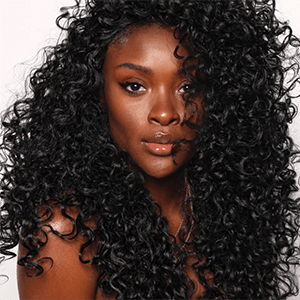 |
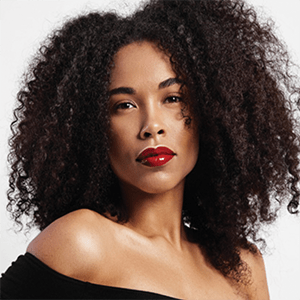 |
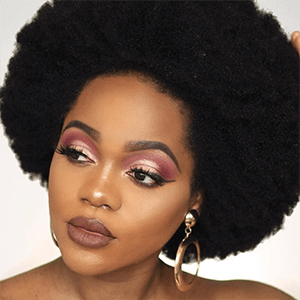 |
| 4A Hair Type
An s-curl pattern is conspicuous. The hair cuticle layer is very thin and provides very little natural protection.
Weaving Hair
Brazil Straight Hair, Peru Body Wave |
4B Hair Type
Cushy z-pattern curl with varying textures and density.
It shrinks up to 70%, so it appears much shorter than it is.
Weaving Hair
Bohemian Hair |
4C Hair Type
Compared to 4B, it has a stronger and complicated hair pattern, which is difficult to be described in a word.
Weaving Hair
Brazil Deep Wave, Brazilian Curly Hair, Indian Curly Hair |
|
|
|
| Ceramic Flat Iron
It evenly distributes heat throughout the plates and causes less hair damages compared to titanium. On the other hand, it takes longer time for strong curls. |
Tourmaline Flat Iron
Containing a crystal generating negative ions. Though it generates high temperature, it works gently, preventing hair damages. Suitable for 4B. It tends to be pricey. |
Titanium Flat Iron
For strong and complex pattern hair types, titanium is a great material to be used.
Inadequate temperature control is its downside, which makes it prone to hair damages. |
Hair Type can be categorized using different systems including Andre Walker, LOIS, and FIA. The above is based on FIA chart.
2) Based on hair length or a desired style,
| 1/2 inch Mini Flat Iron |
1 1/4 inch Flat Iron |
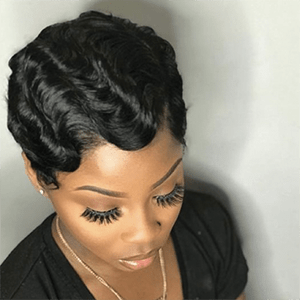 |
When it’s desired to straighten hair from a point very close to the scalp.
For very tight curls.
For bangs. |
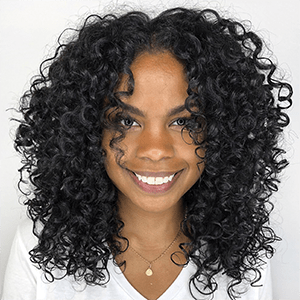 |
For shoulder-length hair.
For thicker hair. |
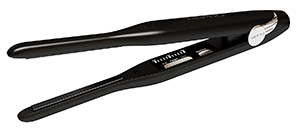 |
H2Pro BDM310 3/10″ Black Diamond |
 |
H2Pro Vivace 1 1/4″ Auto Shut Off Flat Iron |
| 1 inch Flat Iron |
1 1/2 to 2 inch Flat Iron |
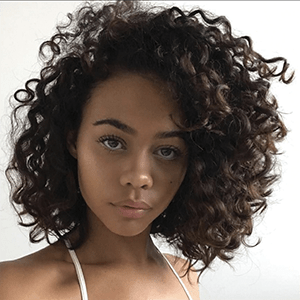 |
Being the most popular size, it’s offered with various features and options.
For short hair. |
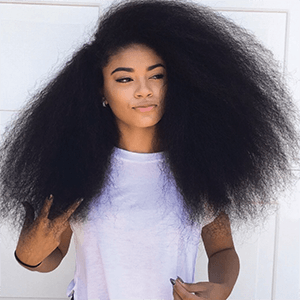 |
1 1/2 to 2 inch Flat Iron
For thick and curly long hair that falls below shoulder.
For customers who want to save time. |
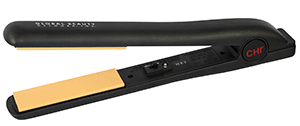 |
CHI 1 Inch Ceramic Ionic Tourmaline Straightening Iron |
 |
Babyliss Pro Nano Titanium Ultra-Thin Straightening Iron – 2 Inch |
3) Depending on Temperature,
| Optimum Temperature for Hair Types |
| Above 420°F |
Breaking down hair proteins, resulting in hair damages. |
| 380°F |
Thick hair |
| 350-370°F |
Curly hair |
| 330-350°F |
Moderate thickness, straight hair |
| 300-330°F |
Thin and frizzy hair |
| 300°F |
Damaged hair |
| Below 300°F |
Too low to achieve a satisfactory result. |
Note: generally, 360-410°F range is suitable for African American hair.
- Tested in BNB Lab!
We used a heat sensing camera and a laser thermostat to measure how quickly the temperature rises, how high it reaches, and how well the heat is distributed for a total nine of different flat irons from different brands and price ranges.
According to our test, the more expensive they are, the quicker they heated up. Those more expensive ones also maintained the temperature better and had more evenly distributed heat over the plates. You can see that Brand “C” (grey) on the graph shows such pattern. It reached the maximum temperature within 30 seconds and maintained the temperature thereafter. All products did not exceed 410°F at their highest heat settings even though some of them were advertised as having max temperature of 450°F.
Flat Irons with Even Distribution of Heat
- Common Mistakes Using Flat Irons
As flat irons apply heat to hair that is vulnerable to heat damages, they must be used with caution. Most of all, you must be careful not to burn your skin. The followings are common mistakes made by consumers.
1) Buying flat irons based on budget while ignoring difference in materials such as ceramic, tourmaline, and titanium.
You must choose a flat iron made of a material that is suitable for your hair.
2) Buying flat irons without temperature settings.
You must remember that you need different temperatures for different hair types and styles.
3) Using flat irons on wet hair.
Just like when you’re ironing your wet shirts, hot irons on wet hair can produce hot steam, resulting in burns and hair damages.
4) Neglecting adequate application of heat protector products.
Heat protector products can reduce heat damages and protect hair.
5) Excessive use of spray and gel products before flat ironing.
When you notice smoke during using flat irons, it tells an excessive use of hair products, which should be only lightly applied on hair.
6) Using flat irons at high temperature on recently colored hair.
High temperature opens hair cuticle layers, causing the colorants inside to escape sooner.
7) Applying hair irons to the same area repeatedly.
Repeatedly applying heat to a region that resists to be straightened is not a good idea. You should apply irons in a combing-like fashion to a small bunch of hair strands at a time. If you’re using a 1-inch Iron, you should grab an inch width of hair strands at a time.
8) Do flat irons only flatten?
Using different techniques, you can do wave curl styles.
9 )Not cleaning flat irons regularly.
The edge of plates can accumulate contaminants, which can cause hair damages. You should clean your iron regularly using alcohol pads.
Part 2
Trend Analysis
- Top 5 Flat Irons for African American Hair
Source: https://getarazor.com
| Model |
Plate Material |
Temperature |
Why Popular? |
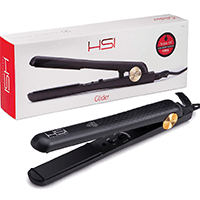
HIS Professional Iron |
Ceramic |
140-450°F |
Fast heating.
Even heat distribution.
450°F maximum temperature, making it suitable for African American hair. |
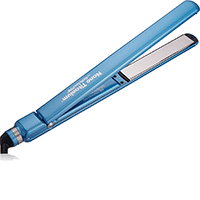
BaBylissPRO Nano |
Titanium |
450°F |
Slim and portable.
Titanium resists rust and wear.
Sustains high temperature for a long period with over 50 temperature settings. |

Bio Ionic OnePass |
Ceramic |
400°F |
Made of a special material, called silicon speed strip to prevent hair damages.
Various temperature settings. |
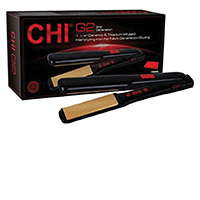
CHI G2 Iron |
Ceramic & Titanium |
425°F |
Titanium enables quick heating while ceramic helps even heat distribution.
Digitally displaying accurate temperature. |

Furiden Hair Straightener |
Tourmaline ceramic |
250-425°F |
Its cylindrical shape serves dual purpose as a curling iron.
360-degree rotating cord prevents tangling.
97-inch long cord adds convenience. |
- Asked the Professional
The Truths about Irons from CEO of H2PRO, a Company specialized in flat irons.
1) What’s a ceramic iron?
Ceramic heaters can achieve heat transfer in a short time and maintain high temperature for a long time. This high-tech material has been used in automobiles, airplanes, and electronics, but it also gave birth to ceramic irons when applied to hair irons. The tech advanced from regular ceramic to black ceramic, and later on to diamond ceramic, adding extra durability.
2) Temperature control is relatively new?
In the early days, ceramic irons had ceramic coats without a temperature controller. However, hair trend focusing on healthy hair and a better understanding of the varying hair thickness and texture led to the development of temperature controllers accommodating various hair types.
3) How to tell false advertising on ceramic irons?
Ceramic heaters are still high-tech. If a flat iron sold at $10-$20 claims to have a ceramic heater, then it’s likely a false advertising. Also, advertising maximum temperature of 450°F without ceramic heaters is likely false because it was only after the introduction of ceramic heaters that irons reaching temperature higher than 400°F could be made. Although many irons advertise that they reach up to 450°F, most products in the market or in a beauty supplier reach 410°F at most in a demonstration.
4) Irons that are suitable for beauty salons?
For beauty salons, accurate temperature control is a must. For plates, you want products made of baked ceramic including ceramic powder and nano-technology colorants. They damage hair less and last longer. Compared to regular color-coated products, irons made with ceramic powder produce more negative ions, reducing hair damages. If a beautician asks for a recommendation, you should be able to provide information on professional product lines based on product knowledge.
5) What are popular designs?
We’ve been making effort to make better ceramic irons. Now, we’re focusing more on the exterior design. The trend is simple design. For professional lines, they are held all day at salons; therefore, a good grip is especially preferred. This year, ergonomic designs such as a flat iron with a perpendicular handle, a triangular-shaped iron, and so on were popular.
- What are selling at beauty supplies?
To understand the customer trend on flat irons, we performed a phone interview with a large beauty supply store with top sales numbers in the South. According to him, it boils down to “the price-performance ratio over functions and performance” when consumers make decisions on flat iron purchases. Not surprisingly, the price makes all the difference.
On the other hand, he pointed out the close relationship between the flat iron sales and hair style trend. Currently, wave styles are in trend, so flat irons are not selling as well as when straight and remy styles were in trend. Fashion trends repeat themselves! The industry insider hoped that “although currently wave and twist styles are in trend, there is no reason for silky and straight hair styles not to make a comeback. Then, flat irons would again make the list of leading products at beauty suppliers.” We asked what types of irons are selling nowadays.
1) By Price — $20-30
Products in a low-mid range, which is $20-$30, are popular. They have good price-performance ratio. Nowadays, those low-mid products are descent in quality, suiting most home users. Technological advancement and the economy of scale as well as competition among manufacturers probably brought down the price. However, those $20-30 products are not as solid and durable as high-end products. In contract, products under $20 are prone to hair damage and breakdown, and products over $30 are not affordable for most people.
2) By Width — 1-inch irons
From a half inch to two-inch, varying size of irons are displayed. Among all of them, one-inch irons are dominantly popular, accounting for almost over 50% of total sales. The biggest advantage of one-inch irons is versatility. Other than extremely short hair, it covers all hair lengths, making the one-inch irons universal. It can also be used to make curls by rotating the irons although they are designed to straighten hair when pulled straight down.
As a side note, another factor impacting sales of narrower flat irons is the viral popularity of edge gels. Those short hairs sticking out at the end were usually attended by 1/2 inch flat irons in old days, but they are increasingly replaced by edge controls providing convenience and cleanness. That could be a reason for customers not to buy a narrower iron.
3) By Package — combo products
Combo products that contain two different sizes of irons are customer favorite. For example, a bundle includes 1-inch flat iron and 1/2 inch flat iron for short hairs. The combos run $20 to $30, targeting the majority of consumers. You can buy two with a price of one, so it is an obvious choice. The quality of combos is comparable to non-combos.
4) By Material — titanium and ceramic
Titanium and ceramic products are about 50:50 in sales amount. Those products producing negative ions seem to not strongly appealing to consumers who are deterred by the steep price.
- Conclusion:
“Is it for a short hair or a long hair?”
When a customer looks for a flat iron, you should ask this first. Before determining plate materials, ceramic or titanium, you must consider the width of the iron plates. It makes a biggest impact on customer satisfaction for the purchased products. After settling on a specific width, you can recommend ideal plate materials, including ceramic, titanium, and tourmaline, which are suitable for different hair types. Simply put, start with width and proceed to material. To achieve the optimal hairstyle requiring a flat iron, the iron must fit the hair type, lifestyle, and styling needs of a customer. If you figure out what the customer wants and recommend optimal products accordingly, you will provide the customer of an amazing and efficient styling experience through a flat iron.
